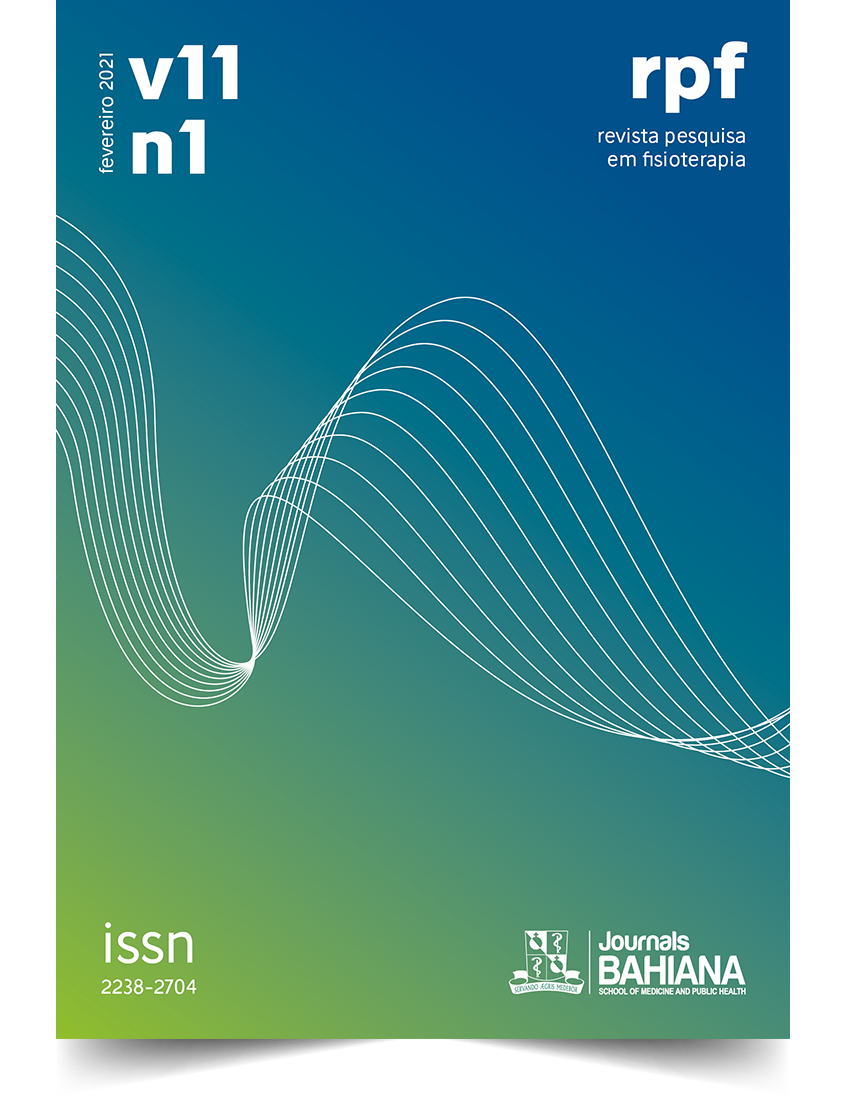Existe diferença no posicionamento dos eletrodos da TENS no tratamento da dismenorreia primária? Estudo randomizado
DOI:
https://doi.org/10.17267/2238-2704rpf.v11i1.3411Palavras-chave:
Dismenorreia. Estimulação Elétrica Nervosa Transcutânea. Fisioterapia.Resumo
INTRODUÇÃO: Dismenorreia é a condição dolorosa mais frequente em adolescentes e mulheres jovens causando absenteísmo e presenteísmo no trabalho e na escola. É caracterizada por um quadro álgico leve, moderado ou severo na região pélvica anterior do tipo cólica, o qual pode acontecer antes, durante ou depois do fluxo menstrual. OBJETIVO: Verificar a influência da Estimulação Elétrica Nervosa Transcutânea (TENS) na dor pélvica causada pela dismenorreia primária. MÉTODOS: 50 universitárias foram aleatoriamente distribuídas em dois grupos de 25 voluntárias: Grupo Região Pélvica Anterior (GA) e Grupo Região Pélvica Posterior (GP), que foram submetidas a TENS durante 30 minutos tendo a intensidade aumentada a cada 10 minutos e avaliadas pela Escala Visual Analógica de Dor antes, depois e duas horas após o término do tratamento. RESULTADOS: Houve uma diminuição do quadro álgico nos momentos antes e após o tratamento (GA e GP: p<0,0001) e antes e duas horas após o tratamento (GA e GP p<0,0001). Nos momentos depois do tratamento e duas horas após o seu término foi possível observar um aumento do quadro álgico no GA (p=1,0000) e diminuição no GP, porém, os valores não foram estatisticamente significativos (p=0,8443). CONCLUSÃO: O uso da TENS contribuiu para a redução do quadro álgico das mulheres de ambos os grupos. Registro Brasileiro de Ensaios Clínicos: RBR-67cjv5.



